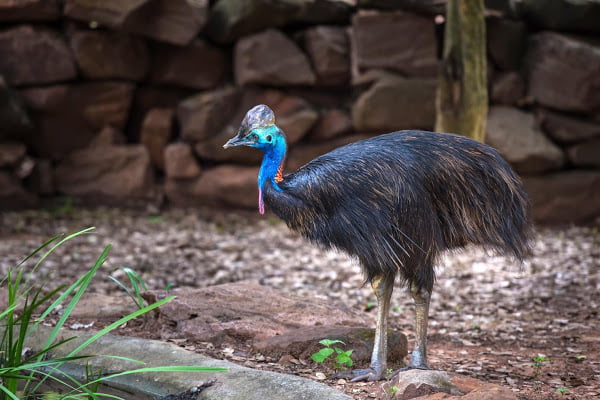A Florida man was killed on Friday by what ornithologists say is an extremely dangerous bird. It was a cassowary – an enormous, flightless bird around which even experienced zookeepers take precautions.
He raised the animal on his farm, along with other exotic birds, authorities said.
The man, who police identified as Marvin Hajos, 75, owned the farm where the cassowary was located and the altercation took place. Emergency medical workers responded to a call about 10 a.m. Friday at a farm near Alachua, Florida, according to Lt. Josh Crews of the Alachua County Sheriff’s Office.
Hajos fell, they said, and the bird attacked him, injuring him severely. He was transported to the hospital, where he died.
Authorities are investigating the circumstances that led to his death.
A woman who identified herself as Hajos’ fiance told The Gainesville Sun “he was doing what he loved.”
The bird has been secured, authorities said. The Sheriff’s Office said they may coordinate with the Florida Fish and Wildlife Commission as the investigation moves forward. The FWC identifies cassowaries as “Class II Wildlife,” which can “pose a danger to people.” The commission requires a permit for the sale, public exhibition, or possession of these animals.
Cassowaries, of which there are three species, are native to the tropics of Queensland, Australia and New Guinea. They are a relative of ostriches, emus and rheas. Thick black feathers cover their bodies, from which a cobalt blue and vibrant red neck protrudes, leading to a head adorned with a keratin “casque,” or crest.
What makes them dangerous are their feet. Three toes have pointed nails, the most dangerous of which is the middle, which ends in a veritable dagger several inches long.
“If you were kicked by a cassowary with that nail, it would do a lot of damage to you,” said Eric Slovak, assistant curator of birds at the National Zoo in Washington. “You would wind up in the hospital for sure.”
Cassowaries, while dangerous, tend to be reclusive, Slovak said. In the wild, they hide deep in the rain forests, but they occasionally encounter humans when they come across a road or a neighbourhood.
“It’s just kind of a big, 200-pound, 6-foot bird roaming around eating fruit all day,” Slovak said.
The National Zoo’s cassowaries are on loan while their enclosures are remodelled, but when they lived at the zoo, Slovak said they took serious precautions with the birds. Their enclosures were built with doors and gates to separate them from the humans who needed to enter.
“At no time, ever, do we ever go in with the cassowary,” he said. “Not because they’re mean, but because we know how dangerous they could be if they got spooked for any reason.”
“I would not understand why anyone would want to keep a cassowary as a pet,” Slovak added.
There have been a handful of frightful encounters with the birds, mostly in their native Australia, though the last known death happened back in 1926, according to Smithsonian Magazine. In a 1999 study, Christopher Kofron of the Queensland Parks and Wildlife Service tallied 221 cassowary attacks in that Australian state, and 150 were on humans.
Kofron noted that the attacks tend to happen “every year” and that the birds most frequently attacked when they were expecting to be fed by a human, or when they were defending themselves, their food or their offspring.
In 2012, an Australian tourist named Dennis Ward was kicked off a cliff into a body of water by a cassowary when he and his family were visiting Babinda Boulders in Queensland. “It just came straight up to me, decided to pick on me for some reason, I don’t know what for,” Ward told The Cairns Post.
“Next thing, thump, I copped a boot in the back and I was tumbling down the bank,” Ward said. “It was pretty high, about 7 foot. I hit this ledge near the bottom and bounced off into the drink.”
Source: IOL
